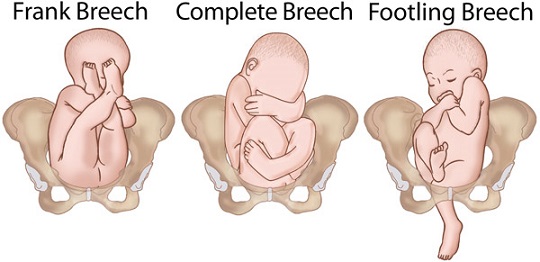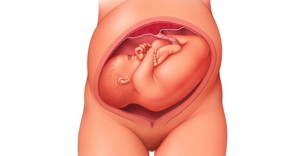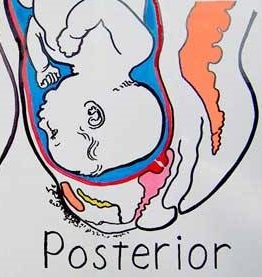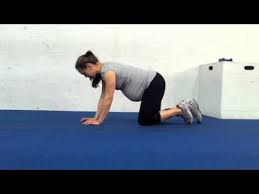Expect your unborn baby to hold different positions inside the womb during pregnancy. As your due date approaches, you are more likely to feel your baby movements inside the womb. These movements usually become more noticeable at bedtime. You do not need to feel concerned about how your baby move during the gestation period, but it is a serious issue as your due date nears. When you get to the 8th month of pregnancy baby position matters a lot. The position of your baby at the time of birth determines how your baby is born.
Baby Position in 8th Month of Pregnancy
In most cases, babies settle into the head down position by the end of 8th month of pregnancy. Your baby will continue to receive antibodies from you to get ready to face the world. Head-down position means that your baby's head is toward the birth canal and feet towards your ribs. Most babies stay in the same position until your due date – they settle into this position because they do not have enough space to move around at such advanced gestational age.
.jpg)
Other Positions Your Baby May Get Into
You need to understand that when you're in 8th month of pregnancy baby position may not be the same for every pregnant woman. There can be certain variations. For instance:
1. Breech
 It means that your baby's feet or buttocks are towards the birth canal and head towards your ribs. Out of every 100, four babies are in breech position at the time of birth. Breech babies are more likely to have birth defects and may suffer trauma during the birth. Your doctor will first try to change the position of your baby, and if that is not possible, a C-section is performed to prevent complications.
It means that your baby's feet or buttocks are towards the birth canal and head towards your ribs. Out of every 100, four babies are in breech position at the time of birth. Breech babies are more likely to have birth defects and may suffer trauma during the birth. Your doctor will first try to change the position of your baby, and if that is not possible, a C-section is performed to prevent complications.
2. Transverse
 It means that your baby is in a horizontal position in the womb. Your baby's head may be to the left side of your body and her feet to your right. Out of 2,000 babies, only one is in transverse position at the time of birth. There may be structural abnormalities keeping a baby to move her position in the uterus. A C-section is a safer option in this case.
It means that your baby is in a horizontal position in the womb. Your baby's head may be to the left side of your body and her feet to your right. Out of 2,000 babies, only one is in transverse position at the time of birth. There may be structural abnormalities keeping a baby to move her position in the uterus. A C-section is a safer option in this case.
3. Posterior
 In 8th month of pregnancy baby position could be posterior too. It means that your baby's head is towards your back. In other words, your baby is in a head-down position but with her face turned up. If your baby is in this position at the time of birth, you should be experiencing back labor instead of cramping in the abdomen.
In 8th month of pregnancy baby position could be posterior too. It means that your baby's head is towards your back. In other words, your baby is in a head-down position but with her face turned up. If your baby is in this position at the time of birth, you should be experiencing back labor instead of cramping in the abdomen.
Ways to Help If Baby Is Not Head Down
An ultrasound may help confirm the exact position of your baby. If your baby is in the breech position, your doctor will try to change the position manually. They usually use a technique called external cephalic version, which is attempted when you are between 36 and 42 weeks of pregnancy. If you are less than 36 weeks pregnant, there is still ample time for your baby to change position. But, it is also believed that version is more successful when done around 36th week of pregnancy because the baby is still smaller in size.
Procedure
Your doctor will give you an injection containing tocolytic medicine before performing the procedure. It relaxes the uterus and prevents contractions. Once the uterus is relaxed, your doctor puts one hand by your baby's head and the other by the buttocks, and then gently rolls the baby to a head-down position. The procedure may cause the uterus to contract, which can cause some pain.
Your doctor may make another attempt if the first attempt does not prove effective. They will give you epidural anesthesia first to ensure the procedure is not painful. The procedure is performed in the hospital because serious complications are rare but real. To prevent complications, you may receive an emergency C-section.
It is possible to deliver baby vaginally, but it can be extremely painful for the mother. Moreover, it is not a recommended option in first time pregnancies. Caesarea section is always a safer delivery option for babies in breech position.
What Can You Do at Home to Get Baby into the Right Position?
You should talk to your doctor if your baby is not in a normal position. They will suggest you what to do to improve things. When it's still early in 8th month of pregnancy baby position can be improved with certain techniques and exercises. Just avoid doing any of these exercises if you feel any discomfort.
1. Walking

Walking twice a day as you reach close to your due date may help bring your breech baby into the natural position. It works because walking will ensure the heaviest part of your baby's part is towards the ground – that is gravity at work. Be sure to walk for at least 20-25 minutes twice a day to see results.
2. Crawling

You may consider crawling if your baby is in a breech or transverse position. Just crawl for 10 minutes a day to encourage your baby to change positions in the womb. Get on your knees and use your palms to support your upper body. Keep your back straight and ensure that your belly does not touch the ground as you crawl.
3. Yoga
.jpg)
Yoga is helpful, but you may want to avoid trying it in your last trimester and when it's too close to your due date if you have not done it before in your life. Consider doing it with medical supervision. Try certain yoga postures that make you go on all fours. Do not try to be too experimental here though.
4. Swimming

This low-impact activity improves your unborn baby's overall health. Get in the swimming pool and practice the breaststroke to encourage your baby to get in a more natural position. Swimming regularly is also good for your own health and may play a role in making labor easier.
5. Sleeping
.jpg)
Be sure to take at least 8 hours of sleep daily and give your baby ample time to change position in your womb. Try to sleep on your left side during the last few months of your pregnancy – use a pillow to support your abdomen. Being on the left side will also help get your baby into the natural position before your due date.
